
|
![]()
Greatest Films of the 1970s
1970 | 1971 | 1972 | 1973 | 1974 | 1975 | 1976 | 1977 | 1978 | 1979
Title Screen Film Genre(s), Title, Year, (Country), Length, Director, Description 

Amarcord (1973, It./Fr.) (aka Fellini Amarcord), 127 minutes, D: Federico Fellini


American Graffiti (1973), 110 minutes, D: George Lucas
In pre-Kennedy assassination America and in the pre-Vietnam War era, a time of innocence, this nostalgic, coming-of-age story featured the songs of its era, in a classic sound-track provided by Wolfman Jack's Rock 'n' Roll radio show. Director George Lucas memorialized his own teenage years in Modesto, California in this episodic, idealized, low-budget tale of a bygone era with numerous complex subplots during a series of misadventures. It was followed by the inevitable sequel: More American Graffiti (1979), and the TV show Happy Days (1974-1984) was a successful spin-off (as was Laverne & Shirley (1976-1983)). On their final summer night after their Class of 1962 graduation, two clean-cut, college-bound California high schoolers were introduced -- studious Curt Henderson (Richard Dreyfuss) (who had reservations about his future and leaving town) and popular senior-class president Steve Bolander (Ron Howard) - with girlfriend, upcoming senior, and head cheerleader Laurie Henderson (Cindy Williams) (Curt's sister). They and others cruised the streets of their N. California town in their hot rods, and hung out at Mel's Diner (featuring waitresses on roller skates). Other characters included 22 year-old, local drag-race champion and auto mechanic John Milner (Paul Le Mat) and out-of-town hot-rodder Bob Falfa (Harrison Ford) driving a black 1955 Chevy, gawky and nerdy Terry "the Toad" Fields (Charles Martin Smith), bratty 13 year-old Carol (Mackenzie Phillips), a mysterious and elusive blonde girl in a white 1956 T-Bird (Suzanne Somers), and an experienced pretty blonde Debbie (Candy Clark). John was compelled to protectively baby-sit and watch over Carol who rode in his yellow deuce coupe, while Curt became mesmerized by a glimpse of an unidentified sexy female in the white Thunderbird who mouthed the words to him: "I love you" - and he became obsessed with locating her all night long. Terry had borrowed Steve's 1958 Chevy Impala for the evening, and became acquainted with puffy-haired Debbie, but the car was stolen (while they were necking on a blanket) and he sought rescue by John from threatening thieves. In the pre-dawn hours, a drag-race was conducted between John and Falfa (with Laurie riding with him) on isolated Paradise Road - the race ended with John's victory after Falfa's car flipped, although miraculously no one was seriously injured. The film concluded with Laurie reuniting with Steve, and DJ Wolfman reading Curt's dedication-message on the radio to the blonde - who responded that she would be cruising 3rd Street that evening. However, by this time, Curt had become decisive about his future - he would definitely be leaving town by plane for college in just a few hours. On the other hand, Steve decided to postpone his departure to stay with Laurie, but saw Curt off at the airport in the morning. The postscript of the film briefly described the futures of four characters: John was killed by a drunk driver, Terry was MIA in Vietnam, Steve was employed as a Modesto, CA insurance agent, and Curt was in Canada as a writer.

Badlands (1973), 95 minutes, D: Terrence Malick
29 year-old director/writer Terrence Malick's daring debut film was inspired and based on the murder spree of a killing, loving couple, 19 year-old Charles Starkweather and 14 year-old Caril Ann Fugate, in the late 1950's in Nebraska and bordering states. The disturbing, complex character study, a coming-of-age crime drama, observed the twisted, strange actions of two young fugitives on a senseless, emotionally-apathetic, and casual homicidal spree from her small South Dakota hometown, and how they ensured their immortality through unplanned or unintentional murders before being apprehended. The film opened with the deadpan-toned, off-screen narration of one of the two main characters - a young, transplanted, motherless South Dakotan living in the small town of Fort Dupree: naive, lackadaisical, starry-eyed, celebrity magazine-addicted and impressionable 15 year old teenager Holly Sargis (Sissy Spacek), who was baton-twirling in the street. The girl concluded her first statement with: "Little did I realize that what began in the alleys and backways of this quiet town would end in the Badlands of Montana." Holly was introduced to the unstable, social outcast, and misfit garbage collector who soon became her boyfriend - a charismatic, 25 year-old Kit Carruthers (Martin Sheen, a James Dean look-alike), a troubled Korean War vet. Holly's widowed, house-painter-employed father Mr. Sargis (Warren Oates) disapproved of his daughter's growing romance with Kit, by coldly executing her beloved pet dog in a field, and ordered Kit to never see Holly again. In retaliation, Kit broke into Holly's house and pressured Holly to run away with him; when her over-protective and abusive father protested and threatened to call the police, Kit non-chalantly shot him dead - as Holly impassively observed. Holly seemed ready to become Kit's good-girl-gone-bad partner, when he torched Holly's house (and attempted to fake their fiery suicide with a recorded suicide-note left behind). The two then fled from town after detouring to Holly's high school to pick up her books. At first, the couple hid-out and 'played house' at a treehouse that they constructed by a river bank - equipped with various traps and warning systems to alert them to trespassers, and survived by fishing and stealing chickens. Their idyllic time in their temporary home ended when three bounty hunters discovered their hideout and Kit ambushed and killed them. Kit and Holly drove to the isolated, solitary farmhouse of Kit's former garbage collector co-worker Cato (Ramon Bieri), but their stay ended badly when Kit killed him and also executed some of his visiting friends who were led to a storm celler and brutally shot. They were now forced to leave a second (or third) major crime-murder scene of their own making. The two become notorious fugitives in the Midwest, as their romanticized, celebrity folk hero status was being propagated by the popular media. They broke into a four-story Victorian mansion where they held the rich owner (John Carter) and his deaf maid (Dona Baldwin) hostage for awhile, before stealing clothes, supplies, and the man's black Cadillac to continue their cross-country flight toward the Badlands and wild frontier area of Montana - and later into Saskatchewan, Canada. During the last leg of their journey, one night, they danced in their Cadillac's headlights (to the tune of Nat King Cole singing A Blossom Fell on the radio). Ultimately, their crime spreed ended when they were spotted by a police helicopter and Holly (who was tired of running) refused to join him and promptly surrendered; Kit led state troopers and a Sheriff on a wild chase before the attention-seeking Kit calmly gave up - he marked the spot where he was apprehended with a rock cairn; both Holly and Kit were detained and handcuffed, and shortly later at an airport hangar, Kit offered souvenirs (some of his personal possessions, such as his comb) to idolizing deputies. In the final voice-over as the film concluded, Holly informed everyone that Kit was executed in the electric chair and his body was donated to science, and that she was only considered as an accessory to her partner's crimes (even though she stood by impassively and cooperatively). She pursued her marital dreams by marrying her lawyer's son, and also told how Kit's charming nature could entrance murderers in prison and law officers.


Day For Night (1973, Fr./It.) (aka La Nuit Americaine), 115 minutes, D: François Truffaut



The Day of the Jackal (1973, UK/Fr.), 143 minutes, D: Fred Zinnemann
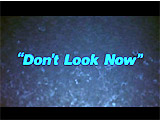




Don't Look Now (1973, UK/It.), 110 minutes, D: Nicolas Roeg
Based on a short story by Daphne De Maurier - this supernatural, mysterious, eerie, psychological thriller told about a British couple in Venice. Following the tragic, accidental drowning of their daughter, John and Laura Baxter (Donald Sutherland and Julie Christie) traveled to Venice where he worked on restoring a church, still shattered and haunted by their child's death. The film was highlighted by their extended love-making scene while both were dressing for dinner. In the off-season resort, they met two elderly sisters, Wendy and Heather (Hilary Mason and Clelia Matania), one of whom was blind but claimed to be psychic. She insisted that, in visions, she saw the spirit of the Baxters' red-coated daughter, and possessed a message of warning from the dead child. While John was skeptical and resistant, he caught a flashing, random glimpse of a red-raincoated 'child' darting around a dark street corner alley - and he saw Laura and the sisters on a funeral gondola drifting down a Venetian canal. The film concluded with John racing in pursuit after the red-garbed figure through Venetian alleys, only to be slashed across the throat by the androgynous dwarf figure. He fell onto the stone floor and bled to death - punctuated by the peals of bells, swirling camera angles, and quick images from earlier in the film. John's funeral at a Venetian canal-side church ended the film.
Enter the Dragon (1973, US/HK), 98 minutes, D: Robert Clouse
The big-budget, American/Hong Kong co-production (and the first American-produced martial arts film) was shot on location in Asia. It featured an aggressive score by Mission Impossible's (TV) composer Lalo Schifrin. It took a satirical jab at the James Bond thriller films with Lee playing a Bond-type character who didn't need gadgetry. This legendary film has been often considered as the best "chopsocky" or "kickfest" (kung fu and martial arts) film ever made by an American studio (Warner Bros). It starred influential action cult hero Bruce Lee in his final, signature film role before his untimely death at the age of 32. Partly inspired by the Lee-helmed film Way of the Dragon (1972) (aka Return of the Dragon), the film pitted renegade, villainous Shaolin Temple monk Han (Shih Kien) against Jeet Kune Do master Lee (Bruce Lee), who was recruited by the British to infiltrate Han's drug and prostitution operation under the guise of taking part in his annual, invitational competition on a mysterious island fortress near Hong Kong. The martial-arts tournament between champions was sponsored by the crime boss - a one-handed, blood-thirsty mastermind who at one point supplemented his missing hand with a fearsome metal claw. The film was only semi-serious, featuring not only a subplot about an indebted, American playboy-adventurer named Roper (John Saxon), one of the competitors, but an added blaxploitation character named Williams (Jim Kelly, a real-life ex-football star, and African-American karate champion who would later star in a black martial arts film titled Black Samurai (1977)). The most memorable scene was the climactic showdown between Lee and Han in a hall of mirrors (with homage to Welles' The Lady From Shanghai (1948)), as well as the first fight in the competition between Lee and O'Hara (Robert Wall), Han's top man responsible for the death of Lee's sister Su Lin (Angela Mao - the "female Bruce Lee"). There was also an uncredited cameo by Chuck Norris as a Messenger (who had a memorable fight scene with Lee in Way of the Dragon (1972)), as well as the first, brief screen appearance by Lee's martial arts "successor" and cinema legend, Jackie Chan.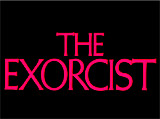


The Exorcist (1973), 120 minutes, D: William Friedkin
Director Friedkin's disturbing, shocking, exploitative, and frightening film adaptation of William Peter Blatty's best-selling, blockbuster book was about satanic demon possession. A sweet pre-teenaged girl Regan (Linda Blair) became possessed by an evil spirit - and wa soon transformed and disfigured into a head-rotating, levitating, green vomit-spewing, obscenity-shouting creature. Her divorced mother Mrs. MacNeil (Ellen Burstyn) was at wit's end, until she called on a dedicated, faith-questioning Jesuit priest Father Karras (Jason Miller) to exorcise the malevolent devil from her daughter's body. An elderly priest Father Merrin (Max von Sydow), whose archaeology project released the Satanic being, also risked his life to administer rites of exorcism with incantations and holy water.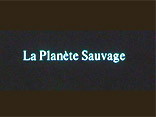

Fantastic Planet (1973, Czech/Fr.) (aka La Planete Sauvage), 72 minutes, D: Rene Laloux
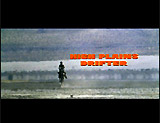
High Plains Drifter (1973), 105 minutes, D: Clint Eastwood
In this stylistic, controversial, off-beat and bizarre revisionist western, director/star Eastwood (with his second directorial effort, and his first western) portrayed the enigmatic, anti-hero loner, named only as The Stranger (similar to Sergio Leone's "Man with No Name"). He took a stylized approach to Sergio Leone's 1960s "spaghetti" westerns and Fred Zinnemann's High Noon (1952). The bleak and violent morality tale began with the 'high plains drifter' slaughtering three hired guns after arriving in the corrupt mining community of Lago. He was then revered as a protective and righteous savior of the townsfolk, and hired by the mining company to hold off three more desperadoes on their way to town: outlaw Stacey Bridges (Geoffrey Lewis) and brothers Dan (Dan Vardis) and Cole Carlin (Anthony James). The trio had brutally whipped and killed the town's local lawman Marshal Jim Duncan (Buddy Van Horn) who was buried with an unmarked gravestone. Dwarf Mordecai (Billy Curtis) (appointed by the Stranger as the town's mayor and sheriff) and innkeeper's wife Sarah Belding (Verna Bloom), the Stranger's perverse love interest, suspected that the Stranger had unusual intentions. He made increasingly-bizarre and outlandish demands, painted the town red, and renamed it "Hell." By his cryptic presence, the almost-supernatural Stranger revealed the townspeople's secret cowardice and hypocrisy. The film ambiguously asked: was he the symbolic reincarnation of the town's murdered honest young lawman Jim Duncan, or his brother seeking retribution? In the concluding sequence, he contemptuously killed three vengeful desperadoes and then abruptly and mysteriously left. As he rode away from the ruined town as Mordecai asked: "I never did know your name." The Stranger replied: "Yes, you do. Take care."


The Last Detail (1973), 103 minutes, D: Hal Ashby





The Long Goodbye (1973), 112 minutes, D: Robert Altman
Director Robert Altman's deconstructed, post-noir mystery crime-thriller/drama was criticized for taking liberties and degrading the familiar Raymond Chandler character (in the 1953 published novel), for updating the novel's late 1940s time-frame to the 70s, and for drastically changing the ending. He deflected outraged audiences by claiming plot wasn't as important as character analysis. Altman's quirky film included a first-person, constantly-moving camera (especially in the early scene introducing cat-loving Marlowe), and several versions of the movie's theme song - a John Williams/Johnny Mercer ballad (first sung under the credits). Among the film's off-beat cast was the main character - a chain-smoking bachelor and quintessential private eye-detective Philip Marlowe (Elliott Gould), deceptively portrayed as hip, laid-back, slovenly, and casually-cool, who lived in a shabby LA apartment with female hippie neighbors nearby on a balcony in the nude practicing yoga. The solitary, idiosyncratic and lonely Marlowe literally rambled throughout the film, joking with other characters and with himself (via a running monologue). In the plot, Marlowe's playboy friend Terry Lennox (ex-NY Yankee player Jim Bouton) was accused of severely beating and killing his rich wife Sylvia - but the suspect mysteriously disappeared after Marlowe was convinced to drop him off at the Mexican border at Tijuana. The uncooperative Marlowe was put in jail for a brief time as an accessory, but then after his release conducted his own investigation, even though he was told that the case was closed following Terry's apparent 'suicide' three days later in Mexico (he was found dead in a Mexican hotel according to officials). Mysterious, callous and manipulative blonde Eileen Wade (Nina Van Pallandt in her US film debut) hired him to find her frustrated, self-destructive alcoholic novelist husband Roger Wade (Sterling Hayden), who had gone missing for a week - and ironically lived in the same Malibu Colony neighborhood where Terry lived. Marlowe located Roger at Dr. Verringer's (Henry Gibson) private, self-help detox clinic, and forcibly took Roger home to Eileen. Marlowe also learned that Terry owed $350,000 dollars to mobster and loan shark Marty Augustine (Mark Rydell), when he was violently confronted by the demanding, bottle-wielding Augustine with a group of hoods, who maimed his own mistress Jo Ann Eggenweiler (Jo Ann Brody) with a broken Coke bottle while threatening Marlowe. The case became extremely complex and interconnected when Marlowe realized that mobster Marty knew the Wades, and that Terry's unlikely 'death' was somehow related. At a beach party at the Wade's home, Marlowe overheard the sinister and shady quack-psychiatrist Verringer demanding and forcing Roger to sign a $4,000 check to pay his bill. Shortly later in the dark, Roger suicidally walked into the ocean and drowned himself. Piecing clues together, Marlowe realized that Roger had been involved in an affair with Terry's wife Sylvia (and Roger had disclosed Terry's affair with Eileen to Sylvia), but Roger had checked into the asylum before Sylvia's murder - so he couldn't have murdered her. Terry was undoubtedly alive when Marlowe received a $5,000 bill (a "portrait of Madison") mailed to him accompanied by a letter of apology. After a bag arrived at Marty's place with the missing $350,000, Marlowe was suspicious that Eileen had returned the money and was planning on selling the Wade house. On a hunch, Marlowe traveled to Mexico and located Terry in a villa on the town's outskirts after bribing officials to tell the truth. Terry admitted to the convoluted love affairs - and that his own romance with Eileen had angered his wife Sylvia, who threatened to go to the police during a fierce argument and report Terry's nefarious associations with gangster Marty. Terry then confessed to brutally beating Sylvia to the point of death to silence her, before giving Marty's money to Eileen and fleeing to Mexico. Exasperated for being used and betrayed, Marlowe shot Terry dead. Walking down the road back to town, Eileen passed him in a jeep on her way to seeing her lover Terry.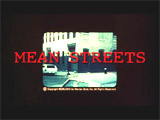

Mean Streets (1973), 110 minutes, D: Martin Scorsese
Martin Scorsese's intense drama - his third full-length and first successful film (after Who's Knocking at My Door? (1970) and Boxcar Bertha (1972)), was semi-autobiographical. The low-budget, brutally-realistic tale that included energizing early 60s rock 'n' roll, told about four struggling, second-generation small-time Italian-American hoods on the "mean streets" of New York's ghetto-like Little Italy trying to establish themselves (the area was populated with petty lawbreakers, gangsters, and rampant crime). [The first words of the film were a key, voice-over narration by Scorsese under a black screen: "You don't make up for your sins in a church. You do it in the streets, you do it at home. The rest is bulls--t and you know it."] The main character was ambitious, wannabe Mafia apprentice and strong Italian Catholic Charlie Cappa (Harvey Keitel) - a symbolic representative of director Scorsese himself. Charlie's uncle Giovanni (Cesare Danova) was the local Mafia boss and grooming his nephew for 'respectable' gang life. Unclear and confused about his life's direction and loyalties, Charlie wrestled with his devout Catholic guilt (continually seeking redemption and suffering penance), realizing the temptations of the Mafia and its constrictions. He also struggled with maintaining a secret romantic relationship with his epileptic cousin Teresa (Amy Robinson), who was regarded by Giovanni as somehow bad. One of Charlie's ambitions was to manage a neighborhood bar-restaurant owned by Tony (David Proval). The neighborhood's violent, wild, unpredictable and hot-headed Johnny Boy (Robert De Niro) was the simple-minded brother of Teresa. In the opening sequence, Johnny Boy exhibited his irresponsibility and recklessness by blowing up a mailbox, and then later became dangerously obligated and indebted to the threatening local loan shark, Michael (Richard Romanus). Charlie found himself aiding and coming-to-the-rescue of Johnny Boy multiple times. Toward the film's ending, a bloody denouement, as Charlie drove Johnny Boy and Teresa in a borrowed getaway car out of Little Italy to Brooklyn, they were ambushed in a drive-by shooting by another car (carrying a vengeful Michael and shooter-assassin Jimmy Shorts (Martin Scorsese)). After six shots, the car crashed into a hydrant, causing injuries to both Charlie (who had been hit twice) and front-seat passenger Teresa, who required hospitalization. Johnny Boy was presumably lethally wounded when shot in the neck, and staggered around on the street before collapsing.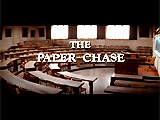

The Paper Chase (1973), 113 minutes, D: James Bridges



Paper Moon (1973), 102 minutes, D: Peter Bogdanovich
Director Peter Bogdanovich's amusing road-drama was an engaging off-beat comedy about a wily, Depression Era con-man who sold Bibles to mourning widows. He was accompanied by his scheming and tough 'adopted' daughter (pairing real-life father-actor Ryan O'Neal and his nine-year old daughter Tatum O'Neal - who won the Best Supporting Actress Oscar for her substantial film debut role). In Gorham, Kansas in the mid-1930s at a gravesite for the funeral of Essie Mae Loggins, the deceased mother's young and precocious, orphaned 9 year-old Addie Loggins (Tatum O'Neal) coincidentally met young, fly-by-night Bible-selling con-man Moses "Moze" Pray (Ryan O'Neal) - a family acquaintance (he was an old girlfriend of Essie Mae's, and suspected as Addie's 'father'). He was convinced to take Addie to her only known relatives in St. Joseph, MO. Addie convinced Moze to let her accompany him on the road, while she continually argued that the $200 given to him as compensation for the DUI car accident that killed her mother be given to her. Moses' unethical swindling 'business' was to represent the Kansas Bible Company and sell personally-monogrammed Bibles to recent widows, while claiming that the deceased husband had ordered the Bible. Addie revealed that she was as shrewd, manipulative and cunning as Moses. While selling Bibles, she posed as Moses' daughter, and cleverly suggested increasing (or decreasing) the Bible price in certain circumstances. At a carnival in the Harem Slave show tent, Moses became romantically entranced by gold-digging, good-time girl and busty exotic dancer Miss Trixie Delight (Madeline Kahn), actually a prostitute. Addie took an immediate jealousy-fueled dislike for Trixie, and devised ways to sabotage Moses' interest in her so that she wouldn't ruin their team-partnership. Later, after Addie had discovered that Moze had spent the money owed to her for a brand-new Model 68 convertible to impress Miss Trixie, she ingeniously devised, conspired and orchestrated a scheme to separate Trixie from Moses by having her bed Floyd (Burton Gilliam), their front-desk clerk at the Exchange Hotel, and getting Moses to walk in on them having sex - the ploy actually worked. As the film was concluding after misadventures with bootleggers and a Sheriff, young Addie was dropped off at her relative Aunt Billie's (Rose-Mary Rumbley) place in St. Joseph, MO. As Moze removed her luggage, Addie left him an envelope in his car with a picture of herself - it had been taken at the carnival of her sitting on a 'paper moon' (a crescent moon swing) - her objective was to be reunited again with him on the road. Addie ran away from her Aunt's place so that she could continue swindling and grifting with Moses on the road, and caught up with him sitting in his stalled truck only a short way down the road (he had paused there and had second thoughts after he had found her envelope on the front seat with her 'paper moon' picture).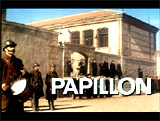


Papillon (1973), 150 minutes, D: Franklin J. Schaffner
In Franklin J. Schaffner's powerful, episodic, semi-biographical prison-escape drama, Steve McQueen starred as indomitable French convict Henri "Papillon" Charriere. A fellow prisoner was withdrawn and shy counterfeiter-forger Louis Dega (Dustin Hoffman), with Coke bottle-thick glasses. They bonded in friendship when Papillon became Dega's bodyguard. Both ended up in the notorious French penal colony in French Guiana, in a brutal work camp. After an escape attempt when he was punished with solitary confinement and reduced rations, Papillon under duress, refused to snitch on Dega for providing him with coconuts. Obsessed with flight and escape, Papillon continued to plot multiple escape attempts but was always recaptured and caged. In the final scene when Dega was reunited with Papillon on Devil's Island, Papillon realized that Dega had become mentally-ill and broken, accustomed to the solitary life on the windswept lonely island, and was unable to join him for his final successful escape effort.
Pat Garrett and Billy the Kid (1973), 106 minutes, D: Sam Peckinpah
Noted as director Peckinpah's final western, and as a complex and challenging film that was initially cut and re-edited by MGM studios against the director's wishes. Many years later, Peckinpah released his own version of the revisionist western. Although it featured lots of legendary western character actors, it replaced traditional western content (i.e., a dramatic gun-battle showdown between good and bad guys) with more character study, ambivalence and guilt over betrayal. Set in New Mexico in 1881, the tale was about the continuing confrontation between outlaw-turned-lawman Sheriff Pat Garrett (James Coburn), and his notorious old friend, anti-hero outlaw Billy the Kid (Kris Kristofferson) (aka William Bonney). Both were aging and viewing the handwriting on the wall - reluctantly facing the slow death of the "Old West" by desecrating future forces of corrupting, cold-hearted capitalism. The two were joined by enigmatic stranger Alias (folk singer Bob Dylan in his first screen role, and singing the memorable "Knockin' on Heaven's Door"). Garrett was named sheriff of Lincoln County to defeat his old friend Billy the Kid. Although Billy was successfully jailed and awaiting execution, he escaped by shooting two deputy sheriffs. Then, in Santa Fe, Garrett was hired by the Santa Fe Ring, a group of wealthy (and corrupt) New Mexico cattle-land barons, politicians, attorneys and greedy speculators, including the governor (Jason Robards Jr.) and cattle baron Chisum (Barry Sullivan). He was commissioned to bring in Billy and end his killing sprees and cattle rustling. Billy ignored Garrett's wise advice about escaping to Mexico, and met his fateful end at the hands of his friend. Garrett stalked Billy (back at Fort Sumner rather than fleeing to Mexico) while he was making love to Maria (real-life wife Rita Coolidge) and killed him point-blank. The film ended 28 years later in 1909 near Las Cruces, New Mexico, when Garrett was ambushed and ironically assassinated by the same group, the Santa Fe Ring, who had earlier hired him to kill Billy - a Faustian conclusion.
Save the Tiger (1973), 100 minutes, D: John G. Avildsen

Scenes From a Marriage (1973, Swe.) (aka Scener ur Ett äktenskap), 169 minutes, D: Ingmar Bergman

Serpico (1973), 129 minutes, D: Sidney Lumet


Sleeper (1973), 88 minutes, D: Woody Allen
One of Woody Allen's funniest and zaniest films - it was a futuristic science fiction comedy classic and screwball comedy - with Dixieland and swing music (from the Preservation Hall Jazz Band of New Orleans). This 'fish-out-of-water' comedy was from Allen's earlier period, when he was known for appearing in or directing lightweight comedies, such as Take the Money and Run (1969), Bananas (1971), Play It Again, Sam (1972), and Everything You Always Wanted to Know About Sex* But Were Afraid to Ask (1972). Filled with one-liners, Allen's film both satirized the 1970's and parodied sci-fi books and past classics, such as Buck Rogers "Serial" (1939), Carroll's Alice in Wonderland, Kubrick's 2001: A Space Odyssey (1968) and A Clockwork Orange (1971), George Lucas' THX 1138 (1971), George Orwell's futuristic novel 1984, and Aldous Huxley's Brave New World. It also evoked slapstick comedy classics, such as Harold Lloyd and Buster Keaton films, the Keystone Kops, Chaplin's Modern Times (1936) and the Marx Brothers' Duck Soup (1933). One sly cameo was that of Douglas Rain as an evil computer near the end of the film, gently spoofing his role as HAL from 2001: A Space Odyssey (1968), and Mike Myers' Austin Powers series also owed a debt to this film. It was praised for its more even and disciplined storyline than his previous films. Director/writer Woody Allen played the main character -- jazz clarinet musician and co-owner of a Greenwich Village health food store (Happy Carrot), the nerdy and nebbish Miles Monroe. He found himself 200 years in the future in the dystopian year 2173. The Rip Van Winkle character learned that he had been cryogenically 'frozen' in aluminum foil when complications arose - after he had entered a New York hospital in 1973 for what he thought was a minor peptic ulcer operation. (He was later asked: "It's hard to believe that you haven't had sex for two hundred years." "Two hundred and four," he replied, "if you count my marriage.") He soon discovered that he was considered both a subversive alien fugitive by a Big Brother-type totalitarian government and a savior to the revolutionary underground rebels wishing to overthrow the police state. Worried that he was about to be brainwashed, he escaped and ineptly disguised himself as a robot - a white-faced, bespectacled domestic butler in the home of his future love interest - a rich, clueless, Rod McKuen-loving, pseudo-intellectual poetess named Luna Schlosser (Diane Keaton in her second appearance with Allen in a film, but in her first Allen-directed film). In one funny scene during a hosted party, he passed around a silver-metallic round, orgasm-inducing "Orb." Fearing detainment, Miles went through a series of comic misadventures - he accidentally hid in a mechanized Orgasmatron, came upon a garden with giant vegetables, slipped on a gigantic banana peel during a madcap chase, won a mock beauty pageant believing he was Miss America, and was fitted for a suit by two robotic yet very Jewish tailors. Ultimately, Miles was captured and reprogrammed, but was saved by the now-converted revolutionary Luna and then deprogrammed. In the climax, the two joined together to overthrow the government by attempting to disguise themselves as doctors to disrupt an operation that might save the life of the Leader (a wheel-chair bound dictator with a white dog). After a bombing, the Leader was reduced to a benign, disembodied nose - and then steam-rolled.




Soylent Green (1973), 97 minutes, D: Richard Fleischer
Richard Fleischer's dystopic sci-fi detective crime-thriller was an early cautionary 70s science-fiction and tech-noir disaster film set in an overpopulated, impoverished and polluted dystopic world in the year 2022. Earth had experienced a climate crisis involving the greenhouse effect (blocked gases in the atmosphere, causing higher temperatures with humid conditions), dying oceans, limited fertility of the soil, food scarcity, and crowded living conditions. Society faced a depleted environment, unhealthy air, deforestation, limited housing, polluted water, and fewer natural resources. At ground zero for major problems, NYC with a population of 40 million people, there were massive ecological issues and food supply shortages. Although some lived in luxury, the majority of the desperate 40 million people in the city struggled to survive, with piled up trash, cramped and dilapidated tenement housing, lack of affordable food, homelessness (people sleeping on stairs everywhere), 50% unemployment, etc. In one later scene, garbage trucks with bucket loaders were called in to quell a food riot. Due to the expense and lack of real food, the population was encouraged to consume red and yellow varieties of a manufactured Soylent Corporation product (made of vegetable concentrates), including a new, tastier and healthier high-protein green version derived from ocean plankton, and processed to be consumed in the form of green wafers, known as Soylent Green. The suspicious murder of a wealthy industrialist-lawyer, William R. Simonson (Joseph Cotten) who was associated with the rations and food-manufacturing company known as the Soylent Corporation, kicked off the plot. A member of the elite, the victim's suspicious death might have been part of a carefully-planned assassination plot, and also might elucidate the true meaning of the phrase "Soylent Green." Police officer-detective Thorn (Charlton Heston) was assigned to investigate the killing, first theorized to be a burglary, but determined instead that it was definitely an assassination. Thorn lived with bearded, aging Jewish Solomon "Sol" Roth (Edward G. Robinson in his final film role) - a well-educated, highly-respected ex-university professor - now semi-retired and employed as a police analyst ("ordinary police book") who conducted crime research for Thorn at the "Supreme Exchange." When told to stand down from his investigation, Thorn refused, putting his life in danger from pursuit by armed government agents. In the film's conclusion, Detective Thorn attended the 20 minute euthanasia-procedure of Sol in an assisted-suicide facility known as the "Home" - Sol had just learned the real truth about Soylent Green with a group of other researchers at the Exchange, after studying two volumes of Soylent's recent Oceanographic Survey Report. There was evidence of a major and horrible Soylent secret that was "overwhelming" and would provide the reason for Simonson's murder (to silence him). Simonson had become unreliable to the Corporation after learning the results of the survey: ("He learned these facts, and they shook his sanity"); therefore, company agents expediently eliminated him, fearing that he would divulge the true findings of the report. Thus, Sol (with no more will to live in the degraded world) had chosen a poignant, painless and suicidal death in one of the government's euthanasia clinics. In the memorable death sequence, Thorn watched from an adjoining private room as Sol (in a private chamber) experienced orange-hued lighting, classical music playing (Tchaikovsky's "Pathetique" Symphony No. 6, Beethoven's "Pastoral" Symphony No. 6, and segments of Grieg's "Peer Gynt Suite") and projected video (of a peaceful and "beautiful" green Earth ages ago when animal and plant life thrived and there was no pollution). Sol bemoaned to Thorn about how flawed humans had destroyed the tremendous beauty and wonders of the Earth ("I told you"). Sol urged Thorn in his last dying words to expose the terrible truth of what he had learned about Soylent Green and its major secret: "Horrible. Simonson. Soylent. Listen to me, Thorn. Thorn, listen....You've got to prove it, Thorn. Go to the Exchange. Please, Thorn. Prove it, Thorn. The Exchange." Within a waste-disposal center or plant, Thorn discovered the horrifying, predictable and true composition of the Soylent Corporation's new artificial food product Soylent Green - it was not composed of ocean plankton - ruled an impossibility by The Exchange (the group of researchers) due to barren ocean conditions. Instead, it was composed of the recycled bodies of the deceased inhabitants of the society's euthanasia centers. As the film ended, the seriously-injured Thorn begged his lieutenant partner, police chief Hatcher (Brock Peters), to spread the news: "The ocean's dying. Plankton's dying. It's people. Soylent Green is made out of people...They're making our food out of people. Next thing, they'll be breeding us like cattle for food. You've gotta tell 'em, you've gotta tell 'em...You tell everybody. Listen to me, Hatcher! You're gonna tell 'em! Soylent Green is people! We've gotta stop 'em somehow!"
The Spirit of the Beehive (1973, Sp.) (aka El Espiritu de la Colmena), 97 minutes, D: Victor Erice
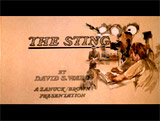


The Sting (1973), 129 minutes, D: George Roy Hill
This blockbuster Best Picture winner was an entertaining, stylish, playful, charming, over-produced crime-caper that revived interest in Scott Joplin's ragtime music. It reunited the successful 'buddy' teams of director George Roy Hill with stars Redford and Newman from the comic western Butch Cassidy and the Sundance Kid (1969) four years earlier. The comedy/drama had an entertaining, good-natured twisting plot about two small-time con artists (Paul Newman as Henry Gondorff/Mr. Shaw and Robert Redford as Johnny Hooker/Kelly) in 1930s Depression-and Prohibition-Era Chicago. The two joined together for revenge (using an off-track horse betting trick) against big-time New York racketeer mob boss Doyle Lonnegan (Robert Shaw) in the film's conclusion. Inter-titles highlighted the heist's clever steps (the "Set-Up," the "Hook," the "Tale," the "Wire," the "Shut-Out," and the "Sting").



A Touch of Class (1973, UK), 105 minutes, D: Melvin Frank
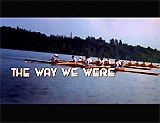
The Way We Were (1973), 118 minutes, D: Sydney Pollack





The Wicker Man (1973, UK), 88 minutes, D: Robin Hardy
Director Robin Hardy's suspenseful, mysterious and erotic folk horror-occult film was an R-rated classic British supernatural thriller. In the plot set in late April of 1973, repressed, virginal, puritanical and devoutly religious Scottish policeman Sergeant Neil Howie (Edward Woodward) traveled solo by seaplane to Summerisle (during the opening title credits) - a remote Scottish (Hebridian) island. He was searching for a missing young 12 year-old schoolgirl named Rowan Morrison (Geraldine Cowper) from an anonymous tip in a letter. She was the alleged daughter of May Morrison (Irene Sunter), a resident of the island; it was suspected that the missing-girl (or kidnapped?) victim might be located there, or there might be clues to her disappearance. The island of Summerisle was owned and run by eccentric millionaire Lord Summerisle (Christopher Lee). The townsfolk inhabitants living there were openly-sexual pagan worshippers who followed the teachings of their atheistic leader Lord Summerisle. Sgt. Howie believed (although wrongly) that the school girl was to be a potential virginal human sacrifice (the May Queen) on May Day, as part of a pagan ceremony to insure a good fruit harvest. While there, Howie was continually tested by the town's pagan practices and open sexual behavior. The film included the much-discussed scene of the innkeeper's sensual daughter Willow MacGregor (Britt Ekland) in the next room attempting to entice Howie on the second night of his visit to the town, while lodging in the Green Man Inn. In the chilling finale of the cult classic, Howie learned that he was the one to be sacrificed. He was brought there to the island to be their pagan sacrifice, to appease the gods and to bring a plentiful fruit harvest. The 'missing' girl was never really missing - but had served as bait to lure him there. She had been part of Lord Summerisle's grand plan to bring him to the island and entrap him as the year's virginal fire sacrifice, after a disastrous harvest. Howie was regarded as the perfect candidate: ("Animals are fine, but their acceptability is limited. A young child is even better, but not nearly as effective as the right kind of adult"). He was told he was the "unique" sacrificial subject: ("You will undergo death and rebirth. Resurrection, if you like. The rebirth, sadly, will not be yours, but that of our crops"); he retorted back: "I am a Christian. And as a Christian, I hope for resurrection. And even if you kill me now, it is I who will live again, not your damned apples." He was stripped and clothed in a ceremonial garment with his hands bound ("It is time to keep your appointment with The Wicker Man"). He was led to a giant, hollow wicker-constructed figure of a man on a cliffside at sunset where he cried out ("Oh, my God!"). The 'wicker man' statue was created of wicker materials designed to be used for fire sacrifices - with compartments for live farm animals (pigs, ducks, calves, etc.). He was horrified when he was locked inside the structure and the worshippers surrounded it (and sang a Middle English folk song with lyrics) as it was set on fire. As Howie was consumed by the flames, he recited the 23rd Psalm ("The lord's my shepherd, I'll not want, He takes me down to lie in pastures..."), and prayed for deliverance.